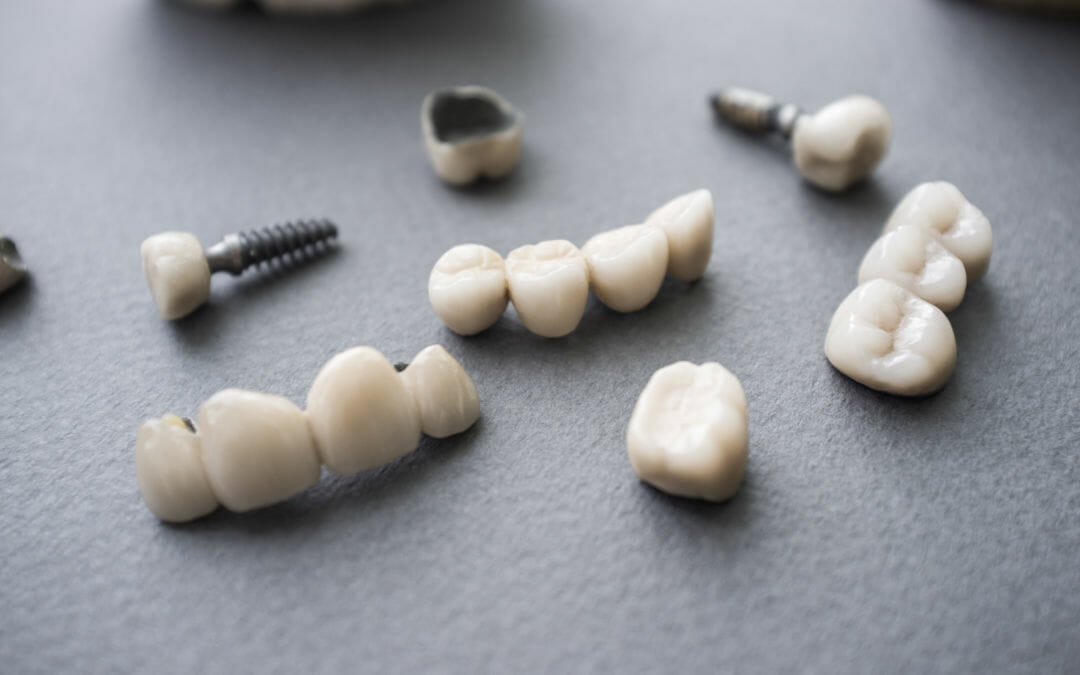Implant restoration is a method of restoring your smile with the help of dental implants. These advanced dental devices are attracting a lot of attention today. With the majority of Americans over the age of 50 missing at least one tooth, there is a growing demand for solutions like dental implants. Understanding the specific process used to add these implants to your mouth will help you decide if they’re the right choice for you.
What is a Dental Implant?
A dental implant is a type of prosthesis that fills in a gap where one or more teeth are missing. Each implant is actually made of two distinct parts. The base is a titanium post that resembles a screw. It attaches to the jaw bone and bonds nearly as strongly as the original tooth’s roots once did. Above this post rests a custom-made tooth restoration piece. This part of the implant looks just like a natural tooth, but it’s tough and made from composite or ceramic materials that are decay-resistant.
Start of the Process: Tooth Removal
The dental implant can’t go into place until the tooth it will replace is fully removed. This includes the tooth roots that are usually hidden under the gumline. If you lost a tooth due to trauma or decay, you may still need some prep work done to create the right place to add in the implant. If multiple teeth are removed in one area, implants can be used to deal with the gap with a single post and multiple restorations attached to it.
Preparing the Gum and Jaw Tissue
Once the tooth or teeth are removed, the dentist needs to assess the health of the gum tissue and jaw bone. The titanium post of the dental implant can only properly bond with the jaw and offer a strong grip when there is sufficient jaw and gum tissue. Unfortunately, both tend to shrink after the loss of a tooth, especially if you experienced an injury or had an infection associated with the tooth loss. Restoring the gum and jaw tissue with surgical grafts may be needed before the rest of the implant restoration continues.
Setting the Post
After any healing from gum and jaw surgery is completed, the next step is to insert the post of the implant. This is a relatively simple surgical procedure involving a cut to expose the bone and a drill hole to hold the post. This can be done under sedation or full general anesthesia. Once the gum tissue is back in place, recovery goes quickly for the majority of patients. Setting the post itself may require a course of antibiotics to encourage prompt healing with few issues.
Healing and Recovery
Healing times vary based on your overall health. Keeping your oral hygiene routine up and following any instructions for therapeutic mouth rinses will improve healing during this recovery period. Your dentist will check the post and its placement to ensure it’s ready to use before moving on to the next step. If there are any secondary treatments needed, the healing and recovery period may extend by a few weeks before it’s time to place the restoration. Taking time to let the post settle in and heal well provides the best possible strength thanks to bonding with the natural bone tissue.
Creating the Abutment
The healed post will be hidden under the edge of the gum tissue in most cases, at least partially. The dentist will make sure the top of the post is properly exposed, which creates an attachment point known as the abutment. Preparing the top of the post is essential so the restoration work can attach firmly and offer nearly as much bite strength as a natural tooth. This serves as a chance for a final checkup on the health and attachment of the post as well.
Adding the Restoration Work
At this point, the custom restoration work that simulates the look of a natural tooth is attached to the top of the post. At this point, the dental implant is finally complete. You can use the implant from that point on, taking care not to bite too hard or chew on things that are damaging to the crown. While it is possible to replace or repair the crown if it becomes damaged, you don’t want to risk stress on the post that runs down to the jaw. Taking care of the dental implant will help it last as long as possible.
You’ll need to discuss dental implants with your dentist to decide if they’re the right type of restorative work for you. Build a beautiful smile with our help here at Eastgate Dental Excellence. We can help you pick the right restoration to fill in gaps where teeth have gone missing so no one will be able to guess you’ve had any work done. Schedule an appointment today to find out what’s possible.

